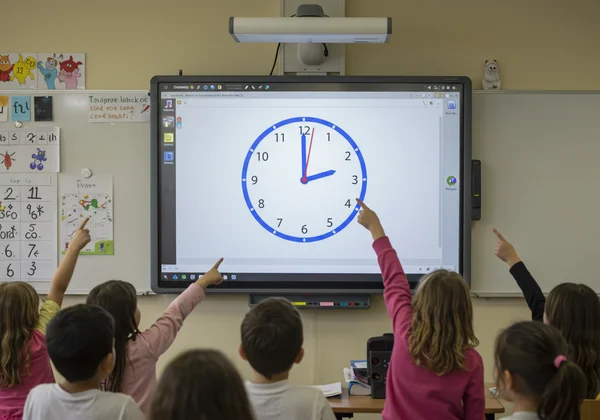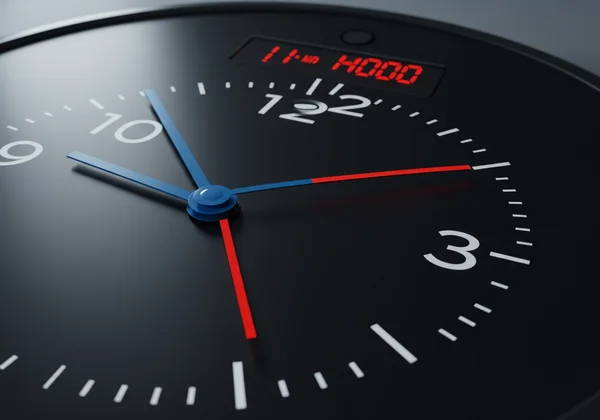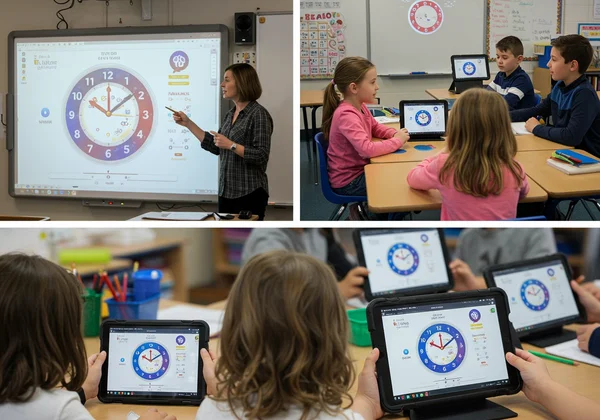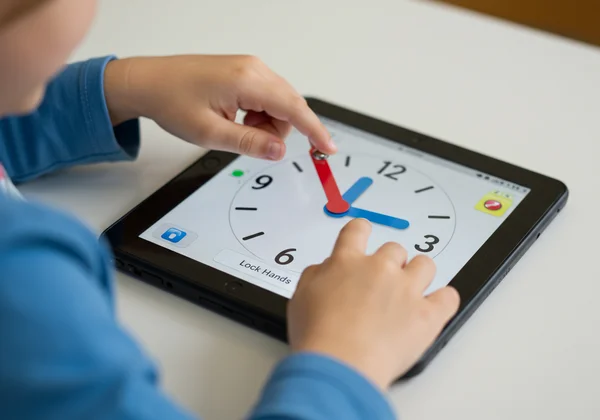Interactive Clock for Classroom: Ultimate Teacher Guide
Time for Engaging Learning: Your Ultimate Guide to Our Interactive Clock
Ever felt traditional methods just don't click with every student? We know how challenging it can be to keep a whole classroom engaged with time-telling! Static worksheets and physical model clocks can make the abstract concept of time feel dull and difficult to grasp. How do you make learning to tell time an exciting, hands-on experience for every student? The answer lies in leveraging a dynamic and engaging interactive clock for classroom settings, and that's precisely what you'll find with our free online tool.
As a dedicated educator, you're always looking for fresh ways to connect with your students. This guide is for you! We will walk you through everything you need to know to seamlessly integrate this powerful, free tool into your teaching. From initial setup to creative lesson plans, you'll discover how our fun learning clock can transform your classroom, making time-telling lessons the highlight of the day.

Getting Started with Your Interactive Clock for Classroom
Adopting a new tool for your classroom should be simple and immediate. We designed our interactive clock to be intuitive, ensuring you can start teaching within minutes. It’s a completely free and web-based tool, meaning no downloads, installations, or sign-ups are required. This accessibility makes it a perfect resource for any educational environment.
Quick Setup for Teaching Time with an Interactive Clock
Getting started is as easy as opening a web browser. First, navigate to the AnalogClock.net homepage. You will be greeted by a large, colorful, and fully functional analog clock. The interface is clean and user-friendly, centered around the primary learning tool.
Notice the distinct colors of the hands: the shorter blue hour hand and the longer red minute hand. This simple visual cue is incredibly effective for helping young learners differentiate between them. Students can click and drag either hand to set the time, and they'll see the digital time display update instantly above the clock. This immediate feedback is vital for reinforcing the relationship between the hands and the numbers they represent.

Seamless Classroom Integration: Displaying Your Interactive Teaching Clock
Our online clock is designed for versatility in any classroom. For whole-group instruction, project the website directly onto your smartboard or screen. The large, clear display is easily visible from the back of the room, allowing every student to follow along as you demonstrate concepts.
For small-group work or individual practice, the tool works flawlessly on student tablets and computers. Since it’s browser-based, there are no compatibility issues to worry about. You can create learning stations where students use the adjustable clock practice tool to complete tasks or quiz each other, promoting collaborative and self-paced learning.

Dynamic Classroom Time Activities with an Interactive Clock
The true power of an interactive tool is its ability to facilitate dynamic classroom time activities. Move beyond passive learning and get your students directly involved with these engaging exercises that cater to various learning objectives.
Whole-Group Engagement: Interactive Q&A & Speedy Challenges
Turn your time-telling lessons into a fun, interactive game show. Use the "Random Time" button to generate a new time on the clock instantly. Challenge the class to call out the correct time. For an added layer of difficulty, click the "Hide Digital Time" button to test their reading skills without a safety net.
This feature is perfect for quick warm-ups at the beginning of class or as a review activity. You can divide the class into teams and keep score to foster friendly competition. These speedy challenges keep energy levels high and ensure every student is focused and participating.
Small-Group & Partner Play: Collaborative Practice Ideas
Encourage peer-to-peer learning with collaborative activities. In pairs, one student can set a time on the online analog clock while the other writes it down or says it aloud. They can then switch roles, creating a simple yet effective practice loop.
For station-based learning, create task cards with different times for students to set on the clock. For example, "Set the clock to show when school starts," or "Show the time you eat dinner." This connects the abstract concept of time to their daily routines, making it more concrete and memorable.
Maximizing Your Teaching Clock Online for Differentiated Learning
Every classroom has students with varying skill levels. A one-size-fits-all approach rarely works. The beauty of our teaching clock online is its built-in features that allow you to easily differentiate instruction, providing support for learners who need it and extending challenges for those who are ready.
Supporting Struggling Learners with Targeted Analog Clock Practice
For students just beginning their journey, the relationship between the hour and minute hands can be confusing. The "Lock Hands" feature is a game-changer. You can lock the blue hour hand in place to focus solely on counting by fives with the red minute hand.
This isolates the skill of reading minutes without the added complexity of a moving hour hand. Once they master that, you can lock the minute hand at the 12 and have them practice identifying just the hour. This step-by-step approach builds confidence and provides the scaffolding needed for success. It’s an ideal way to offer targeted time practice.

Challenging Advanced Students: Exploring Complex Time Concepts
For students who have mastered the basics, the interactive clock is an excellent tool for exploring more advanced concepts. Challenge them to solve elapsed time problems. For instance, "If it's 2:15 now, what time will it be in 45 minutes?" Students can move the hands on the clock to visualize the passage of time and find the answer.
You can also introduce vocabulary like "quarter past," "half past," and "quarter to." Use the interactive clock tool to show them exactly what these phrases look like on a clock face. This visual connection helps solidify their understanding of these common time-telling expressions.
Weaving Our Interactive Clock into Your Telling Time Lesson Plans
Integrating a new tool should enhance your existing curriculum, not complicate it. Our tool is designed to fit seamlessly into your telling time lesson plans, whether you're introducing concepts for the first time or conducting a final review.
Lesson Kick-off: Igniting Interest & Pre-Assessing Skills
Start your lesson with a bang! Use the interactive clock as a captivating warm-up activity. Ask students to show you a specific time, or use the "Random Time" feature for a quick-fire round of questions. This is a fantastic way to grab their attention from the very beginning.
This initial activity also serves as a valuable pre-assessment. By observing how students interact with the clock, you can quickly gauge their current understanding and identify any common misconceptions. This allows you to tailor your lesson to address their specific needs right from the start. Give the fun time-telling game a try with your students.
Reinforcement & Review: Solidifying Time-Telling Skills
After you've taught a new concept, reinforcement is key. Use the clock for a whole-class review at the end of the lesson. The "Hide Digital Time" function is perfect for a quick formative assessment to check for understanding.
You can also assign practice with our online tool as a homework activity. Since it’s accessible from any device with an internet connection, students can continue their learning at home. This provides them with a fun, engaging way to solidify their skills outside the classroom, empowering them to become confident time-tellers.
Ready to Make Time-Telling Fun for Your Students?
Teaching children to read an analog clock is about more than just numbers and hands; it's about giving them a fundamental life skill. With this free, accessible, and highly interactive tool, you can transform this essential lesson from a chore into an exciting adventure. It provides the flexibility and engagement you need to meet every student where they are.
By incorporating dynamic activities, differentiating instruction, and seamlessly integrating it into your lesson plans, you can create a vibrant learning environment. You'll watch your students' confidence soar as they master the art of telling time.
Ready to transform your time-telling lessons? Visit AnalogClock.net today and empower your students with the ultimate interactive learning tool!
Using Interactive Clocks in Education
Why are analog clocks still taught in school when digital is so common?
Teaching analog clocks is crucial for developing critical thinking and a conceptual understanding of time. Unlike digital clocks, which just present numbers, analog clocks provide a visual representation of time's passage, cycles, and fractions (like quarters and halves). This helps children understand concepts like elapsed time and time management more intuitively.
Are interactive analog clocks more effective for learning than physical models?
Interactive online clocks offer several advantages. They provide immediate digital feedback, which physical clocks cannot. Features like "Random Time" and "Hide Digital Time" gamify learning, while the "Lock Hands" function allows for focused, differentiated practice. An online teaching clock is also accessible to every student simultaneously on their own devices, promoting greater engagement than a single physical clock in the teacher's hands.
How can I effectively explain the hour and minute hand to young children?
Use simple analogies and visual cues. On our interactive clock, the hands are color-coded (blue for hour, red for minute) to help with differentiation. You can explain that the short blue hand is the "walking" hour hand because it moves slowly, while the long red hand is the "running" minute hand because it moves much faster. Consistently using this language helps children remember their distinct roles.
Is This Interactive Clock Suitable for Different Learning Styles?
Absolutely. The tool caters to multiple learning styles. Visual learners benefit from the clear, color-coded display. Kinesthetic learners thrive on the hands-on experience of dragging the clock hands themselves. Auditory learners can engage through verbal Q&A sessions with the teacher and classmates. The game-like features also appeal to students who learn best through play. It’s a versatile tool for learning, designed for every child.